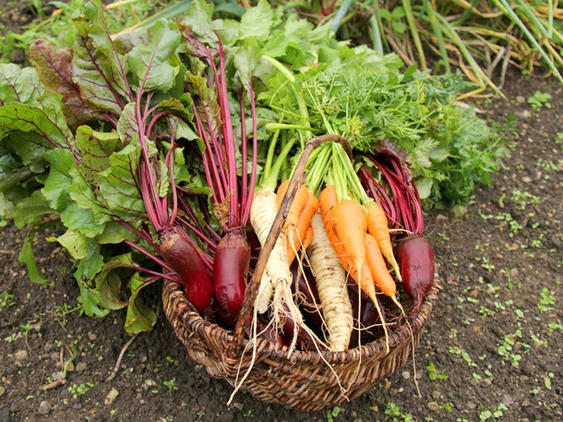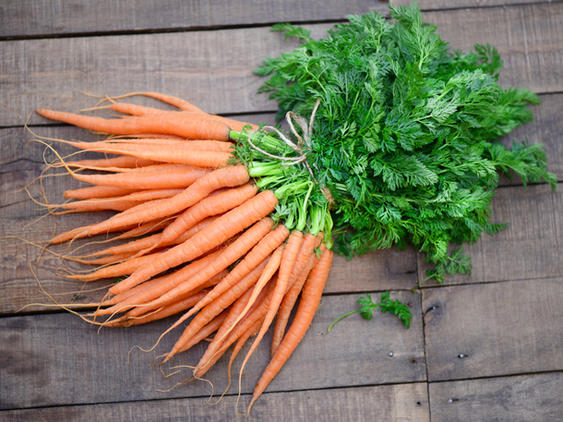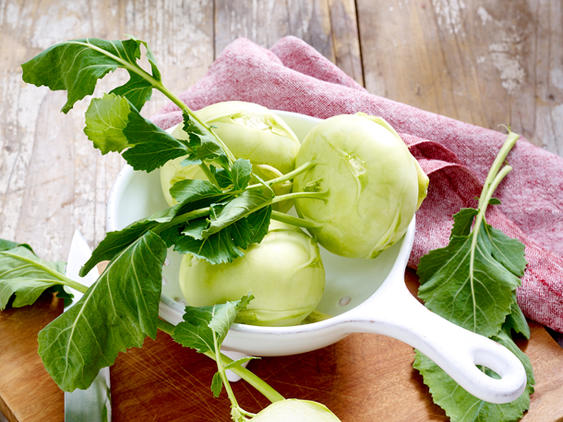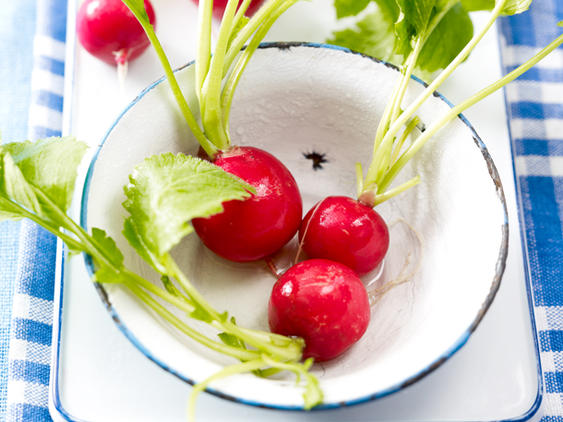Sustainable cooking - kohlrabi leaves, carrot greens and co. are edible

Unnecessarily, kohlrabi leaves, carrot greens and the like always end up in the garbage. Many people have no idea what they are missing! We give tips for sustainable cooking and explain which vegetable greens you can use without hesitation.
The green of certain vegetables is edible, especially root and tuber vegetables. Whether finely chopped, pureed, fried or steamed, the stems and leaves can be used in many ways, just like kitchen herbs. In addition to their spicy taste, they contain many healthy ingredients that even outperform the rest of the plant.

When buying vegetables, you should always look for organic quality. Other vegetables are often sprayed and have high pesticide residues. This is more harmful to health than beneficial.
These stems and leaves provide a great aroma in delicious dishes:
- carrot green - sweet flavouring agent
Don't touch packed carrots. Here the healthy carrot green is simply cut off, although it has a much higher nutrient content than the beet itself. So it is always better to buy carrots in bunches.
The taste of carrots is reminiscent of the sweetness of carrots and the appearance of parsley. Fresh it can also be processed like parsley, for example to cook a vegetable broth or herb sauce. If uncooked, it makes a great topping for salads and soups like our coconut-carrot soup with ham.
As an ingredient in the smoothie, the carrot green provides us with lots of energy and vitamins. For a mango smoothie with carrot green you need: 200 ml water, 75 g baby spinach, green from 2 small carrots, 1/2 orange, 1/2 mango, 1/2 banana and 1 teaspoon linseed oil. Put all ingredients in the blender, puree and enjoy.
- kohlrabi leaves - spicy power plants
Kohlrabi leaves are small power stations: they contain twice as much vitamin C as the tuber as well as significantly more magnesium. But that's not all: the crunch-fresh kohlrabi leaves are wonderfully spicy and versatile. The large ones can be cooked like spinach or cooked in soups and stews. The small ones can be sprinkled over salads or in smoothies. They are also suitable for making your own pesto.
For our spring salad with cheese cake and kohlrabi pesto, the kohlrabi leaves are used several times: not only in pesto but also in a hearty cheese soufflé. A nice recipe that is suitable for vegetarian cooking for guests
3. Radish leaves - green spice
Even the leaves of radishes are far too good to throw away. They taste spicy and hot, almost like rocket, and are extremely green in colour. Stems and leaves can be used like fresh herbs, for example to cook a lettuce soup with radish green and veal dumplings or to refine a kiwi-radish smoothies. You can also create a great aroma by deep-frying the radish leaves.
Because of the fine hairs, the radish leaves are not popular with everyone. The young leaves of the beetroot are a tasty alternative.
- beetroot leaves - colourful vitamin bombs
Beetroot is colourful, versatile and delicious. The same goes for its decorative leaves, which shimmer green and purple. Their strong taste rounds off colourful salad mixes. Roasted briefly in garlic oil and seasoned with a little salt and pepper, they become a hearty side dish for light meat dishes.
In addition, the leaves score points with important nutrients: among other things, they contain seven times the amount of calcium from the beet as well as two thousand times the amount of vitamin K. So more of that from now on!

- fennel green - alternative to dill
The tenderly fiddled green of the fennel reminds optically of dill. It contains essential oils, which bring a mild aniseed note, as well as lots of minerals, calcium and magnesium. Fennel green is ideal for seasoning salads, soups and delicate meat and fish dishes. But always use sparingly, otherwise the aniseed flavour will dominate.
If you would like to cook with fennel green, you should definitely try these recipes: fine potato-fennel soup with prawns and hearty fennel mince pasta.
- celery leaves - more than soup greens
Besides fennel, the other members of the celery family also store essential oils. In terms of taste, the leaves of celery stalks and tubers should be arranged between parsley and lovage. They provide roast and vegetable stock with an excellent seasoning. They also spice up salads, soups and finger foods like our ham packets.

The leaves can also easily be used to make a piquant celery salt. For a small amount you need 1 teaspoon salt of your choice and 10 g celery leaves. Wash the latter, chop a little and dry in the oven at 80 °C (circulating air) for about 20-30 minutes. Then grind very finely and mix with the salt. The salt is suitable for seasoning stews and potato dishes.
This is the right way to store kohlrabi leaves and co:
You should remove the vegetable greenery immediately after shopping, because it draws a lot of moisture from the remaining part, which makes it shrivelled. The kohlrabi leaves and the other greenery can simply be carefully twisted off. Afterwards, you should clean the kohlrabi dry and store it in the fridge, wrapped in plastic - preferably in plastic bags or plastic boxes. If the green is a bit dry, you can also wrap a damp paper kitchen towel around it. This way it will keep for about a week.
Keep your hands off these leaves!
Not all plant leaves are suitable for consumption. Some are more harmful to health than the green of rhubarb and paprika. They contain a high concentration of substances such as oxalic acid and solanine, which can cause headaches or sleep disorders.